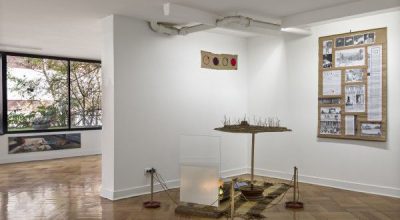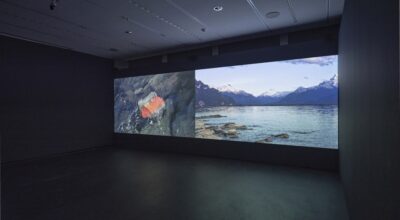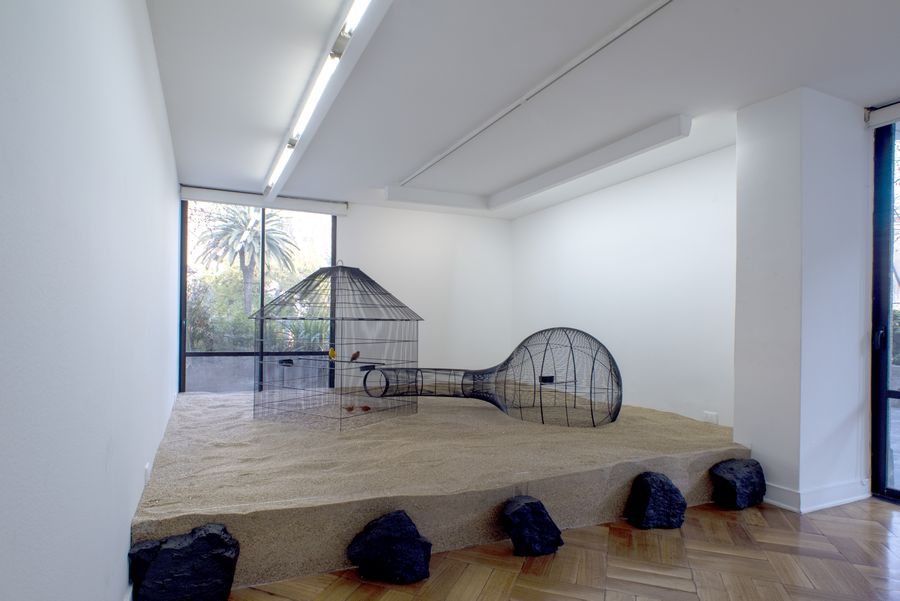
CRISTIÁN SALINEROS: THERE WERE NO LIMITS BEFORE THIS, ONLY TIME
In There Were No Limits Before This, Only Time, artist Cristián Salineros F. explores the relationship between subjects and their environments. The artist turns his studio and the exhibition space into a coordinate system, inside of which migratory birds live and work. Inside his metallic constructions, birds eat, defecate, and urinate; on some occasions, they also procreate, populating the space not only with their waste but also with their hatches.
The artist accumulates their urine and feces on horizontal metallic sheets, which, like a stencil, he partially covers with the shape of the continent of South America; he then photographs them. Furthermore, Salineros also accumulates their waste in the form of totemic sculptures, which result from their living in elongated cages that stretch upwards during seasons. His works, then, are no more than temporal records of these animals’ digestive cycles.
Taking the form of sculpture, photography, and installation, Salineros’ works invoke cartographic maps and laboratory images—presumably objective and universal instruments that allow us to discriminate between familiar and exotic, native and foreign, self and Other. Above Cartographic Exercises, photographic close-ups of the intervened metallic sheet, the artist indicates the local names of migratory birds and the geographic locations where they are endemic, as a metaphor of human migration. One of these birds is endemic from Chile yet migrates every year to the northern hemisphere due to stational reasons: upon abandoning Chile, they lose their local name, “fiofío silbón” and become Elaenia albiceps, their scientific name. Based on the idea that “if you want to know what the concept ‘territory’ means, go and ask a bird”, Salineros invites us to think of the notions of locality and belonging more fluidly.
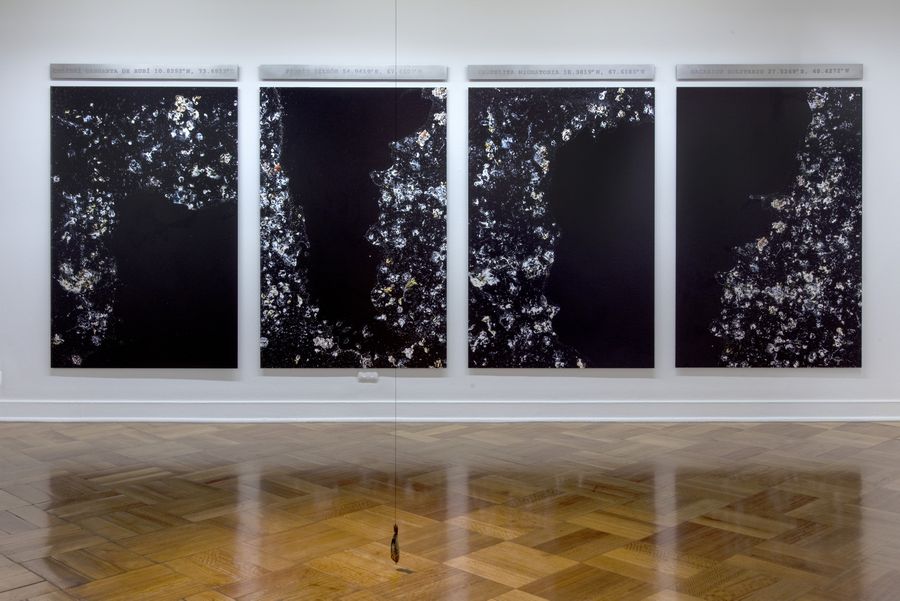



In this exhibition, Salineros shows that limits are arbitrary but necessary to guard an order, system, and identity, and suggests that there must be errors and malformations in order to enforce them. With this in mind, he builds a Pagoda cage—characterized by its regular shape—which is interrupted by a protuberance: it seems as though another body is trying to come out of it, like an appendix about to explode. He partially submerges this cage in birdseed, the image of which reminds us of gluttony or other self-destructive tendencies. At the same time, however, the closed cycle of eating and defecating is the way through which these birds turn the gallery space into their territory, conveying a moving reaction from the audience by way of an obscene image. Inasmuch as they eat and shit, the birds also free up more space in which they can fly. Exploring the relation between positive and negative space as a symbiotic one, Salineros invites us to think of plan and error, regular and organic, system and chaos as dualities that are mutually dependent.
In There Were No Limits Before This, Only Time, Cristián Salineros works literally and symbolically with abjection: he uses the corpse or feces of migratory birds to invoke a series of borders—both physical and virtual—which are transgressed by the effect of time. Through his photographs, the warm excrement of the birds takes on a coldness that is proper of a forensic laboratory: paradoxically, it is through this translation that it arouses not repulsion and indignation in us but rather seduces and attracts us. Translating a deceased bird into a bronze figure and hanging it as a plumb bob, on the other hand, he renders a sort of homage to one of the animals that worked to produce the images of Cartographic Exercises, speaking to the audience in a sinister or perhaps, tender, gesture. Finally, it is by testing, moving, and transgressing limits that the artist sheds light on their malleability. He suggests that the only agent that can dictate movements, of forming and expelling a body from another one, of establishing relationships between individuals and their environment, is time.


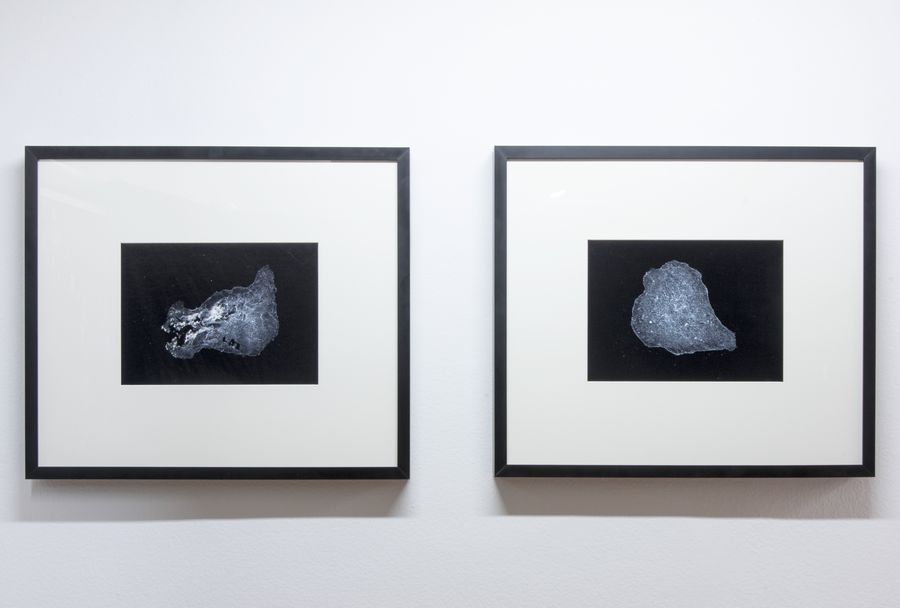

There Were No Limits Before This, Only Time, by Cristián Salineros, is on view from August 26 to October 6, 2022 at D21 Proyectos de Arte, Nueva de Lyon 19, department 21, Providencia, Santiago de Chile.
También te puede interesar
COMITÉ CENTRAL DE LA PINTURA CHILENA (AL CUIDADO DE GONZALO DÍAZ)
Comité Central de la Pintura Chilena, al cuidado del artista Gonzalo Díaz, es una muestra en D21 Proyectos de Arte que reúne a los artistas Ivo Vidal y Jorge (Jojo) Salazar, quienes a partir de…
IGNACIO ACOSTA’S ARCHAEOLOGY OF SACRIFICE
In line with Frederic Jameson’s musings on the relationship between utopia and science fiction, and seeing the latter’s strength in failing to accurately imagine a real future, "Archeology of Sacrifice" similarly plays with our...
ARCHIPRESENTE: ARTE LATINOAMERICANO EN LA COLECCIÓN CA.SA
La exposición reúne trabajos en pintura, escultura, dibujo, fotografía, instalación y video, más otras presentaciones híbridas que son parte de la Colección Ca.Sa, una de las más completas en su tipo en Chile, y...

